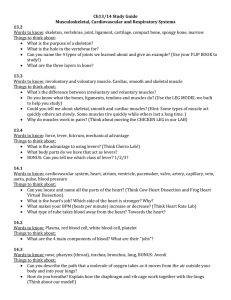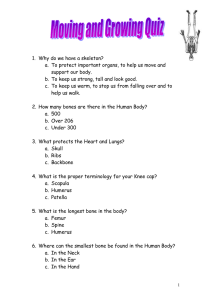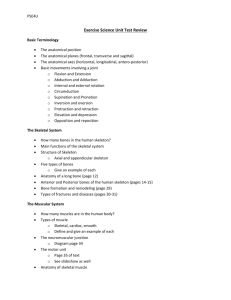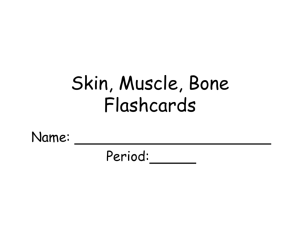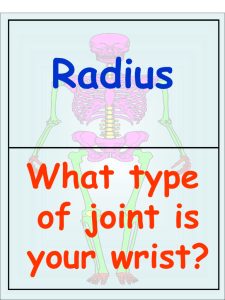Unit_5_Study_Questions
advertisement
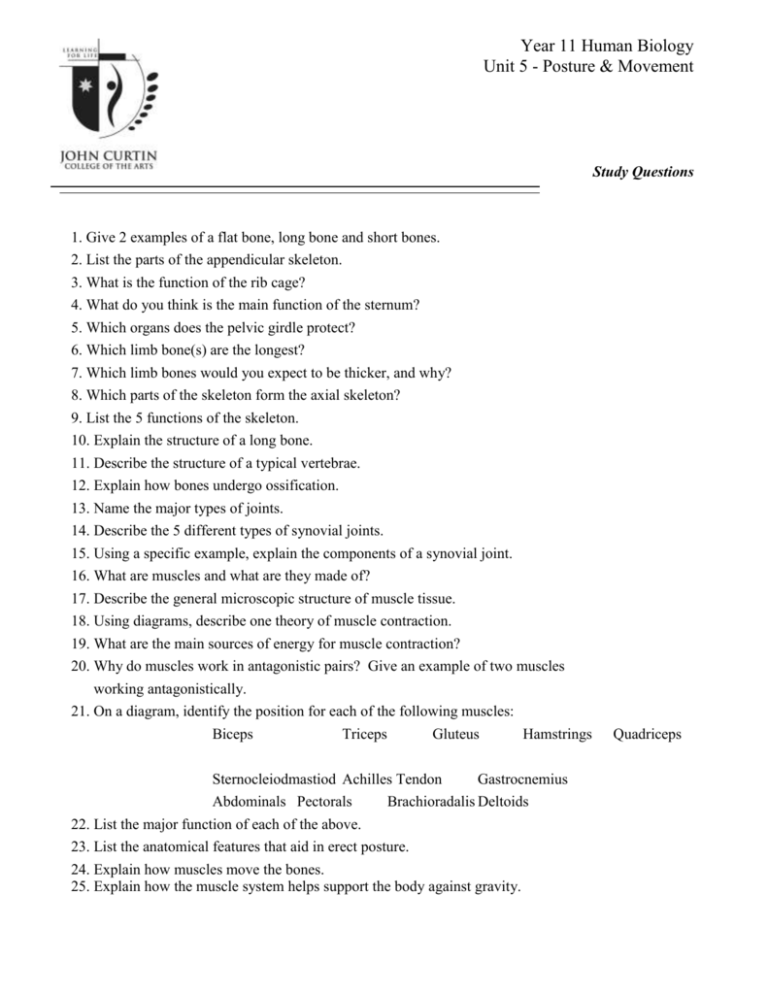
Year 11 Human Biology Unit 5 - Posture & Movement Study Questions 1. Give 2 examples of a flat bone, long bone and short bones. 2. List the parts of the appendicular skeleton. 3. What is the function of the rib cage? 4. What do you think is the main function of the sternum? 5. Which organs does the pelvic girdle protect? 6. Which limb bone(s) are the longest? 7. Which limb bones would you expect to be thicker, and why? 8. Which parts of the skeleton form the axial skeleton? 9. List the 5 functions of the skeleton. 10. Explain the structure of a long bone. 11. Describe the structure of a typical vertebrae. 12. Explain how bones undergo ossification. 13. Name the major types of joints. 14. Describe the 5 different types of synovial joints. 15. Using a specific example, explain the components of a synovial joint. 16. What are muscles and what are they made of? 17. Describe the general microscopic structure of muscle tissue. 18. Using diagrams, describe one theory of muscle contraction. 19. What are the main sources of energy for muscle contraction? 20. Why do muscles work in antagonistic pairs? Give an example of two muscles working antagonistically. 21. On a diagram, identify the position for each of the following muscles: Biceps Triceps Gluteus Hamstrings Sternocleiodmastiod Achilles Tendon Gastrocnemius Abdominals Pectorals Brachioradalis Deltoids 22. List the major function of each of the above. 23. List the anatomical features that aid in erect posture. 24. Explain how muscles move the bones. 25. Explain how the muscle system helps support the body against gravity. Quadriceps




